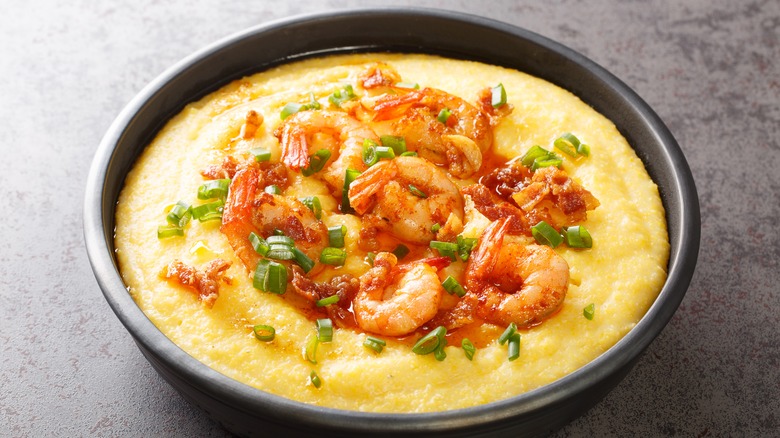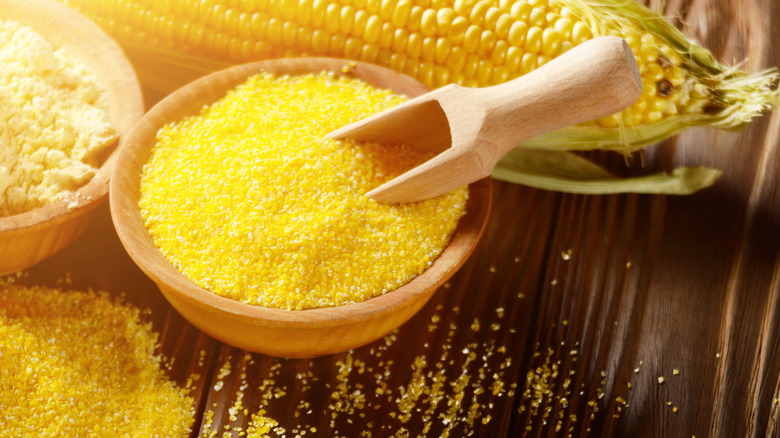Why You Should Never Use Cornstarch To Thicken Grits
Previously relegated to southern-style kitchens, grits made their way into the fine-dining scene in the 1980s with dishes such as shrimp and grits. As the story goes, that particular grit dish came from African slaves in the Carolina Lowcountry region of America's Deep South. It mostly remained there until New York Times food editor Craig Clayborn and North Carolina chef Bill Neal teamed up to popularize the shrimp-and-grits concept, according to UCHealth. Now the wider world knows some Lowcountry secrets, including the hearty, healthy magic of dried corn ground into a mushy mess of deliciousness.
Food Network explains that grits were a part of Native American cuisine and typically come from ground yellow or white "dent corn," which is higher in starches and lower in sugar than standard "sweet corn." Farmers usually harvest dent corn after it has matured in the field and dries out, forming a dip or "dent" in each kernel, per Serious Eats. As a product of Mother Nature, grits carry oodles of nutrients, notes WebMD, including vitamins, minerals, and antioxidants that can help reduce risks associated with heart disease and Type II diabetes.
Various types of grits determine the cooking methods and how to keep the sturdy consistency you want — in other words, thick and not watery! If you do end up with runny grits, don't worry because there are ways to thicken grits, and they most definitely do not involve cornstarch.
Sticking together through thick and thin
To make the creamy comfort food you're craving; it's important to get the correct liquid to grits ratio. The amount of water, milk, or chicken broth you use depends on the style of grits — either quick-cooking, instant, hominy, heirloom, or stone-ground grits. Follow the recipe on the box or in your cookbook, but Food Network recommends a four-to-one ratio of liquid to grits. Other components come into play, and it's common to occasionally get it wrong — resulting in a steamy pot of soupy grits.
The first thing to know is this: cornstarch is not your friend in this scenario. Foods Guy notes that cornstarch doesn't actually thicken grits but instead highlights and intensifies the bland, starchy flavor. Overpowering the earthy corn aura is not what you want, so consider several other thickening options. MasterClass recommends paying attention to the heat level, warning that extra-hot water can lead to soupy texture because high heat keeps grits from bonding and thickening. Opt for slow cooking times over medium heat. Adding an egg gives depth to the texture, as does a touch of baking soda or unsalted butter, notes MasterClass. Be sure to strain out excess moisture after cooking and let them sit for a few minutes to thicken.
If you really want creamy grits that stick together through thick and thin, consider using stone-ground grits. Southern Living explains that this type of old-fashioned grits has more body, leading to cohesive texture and proper thickness.

